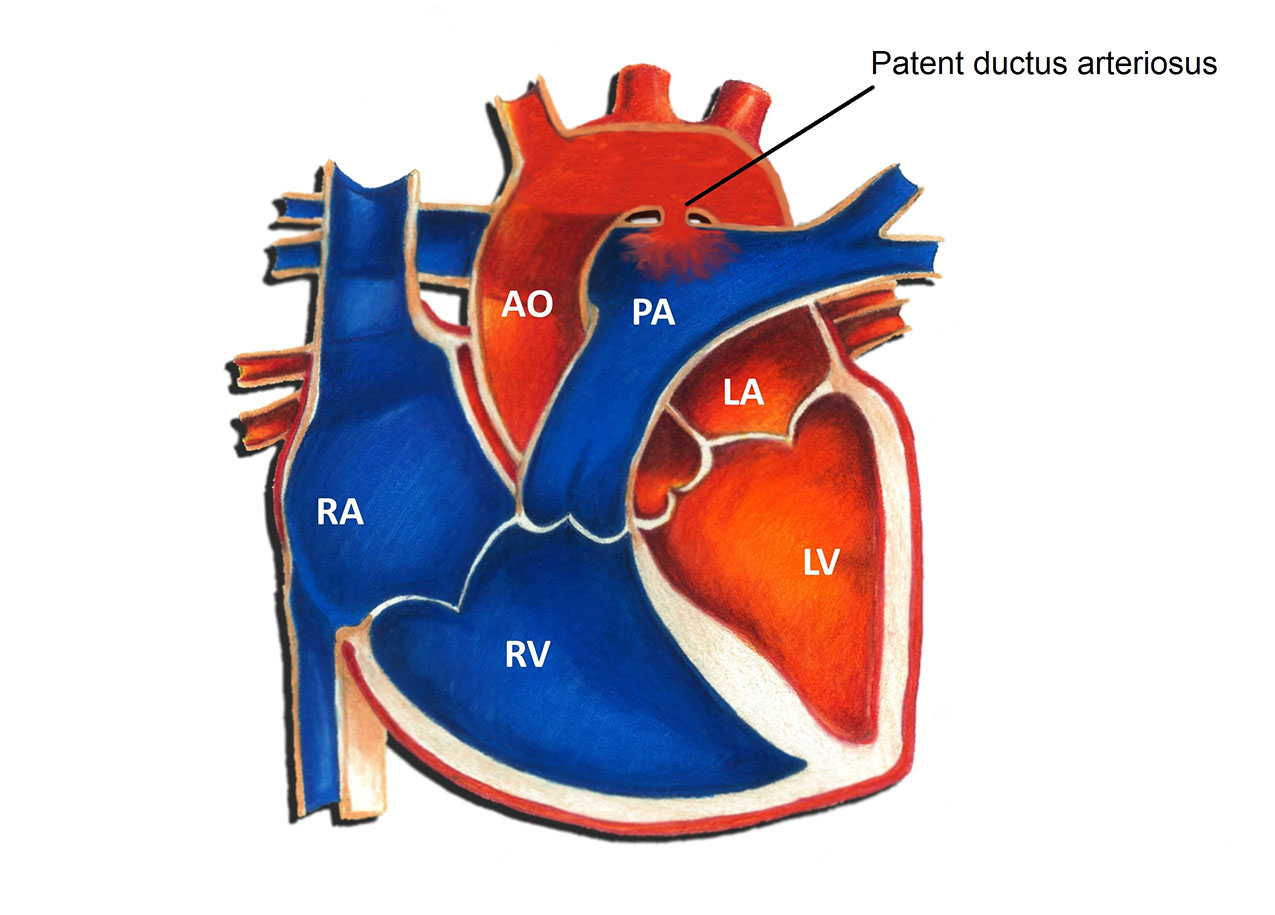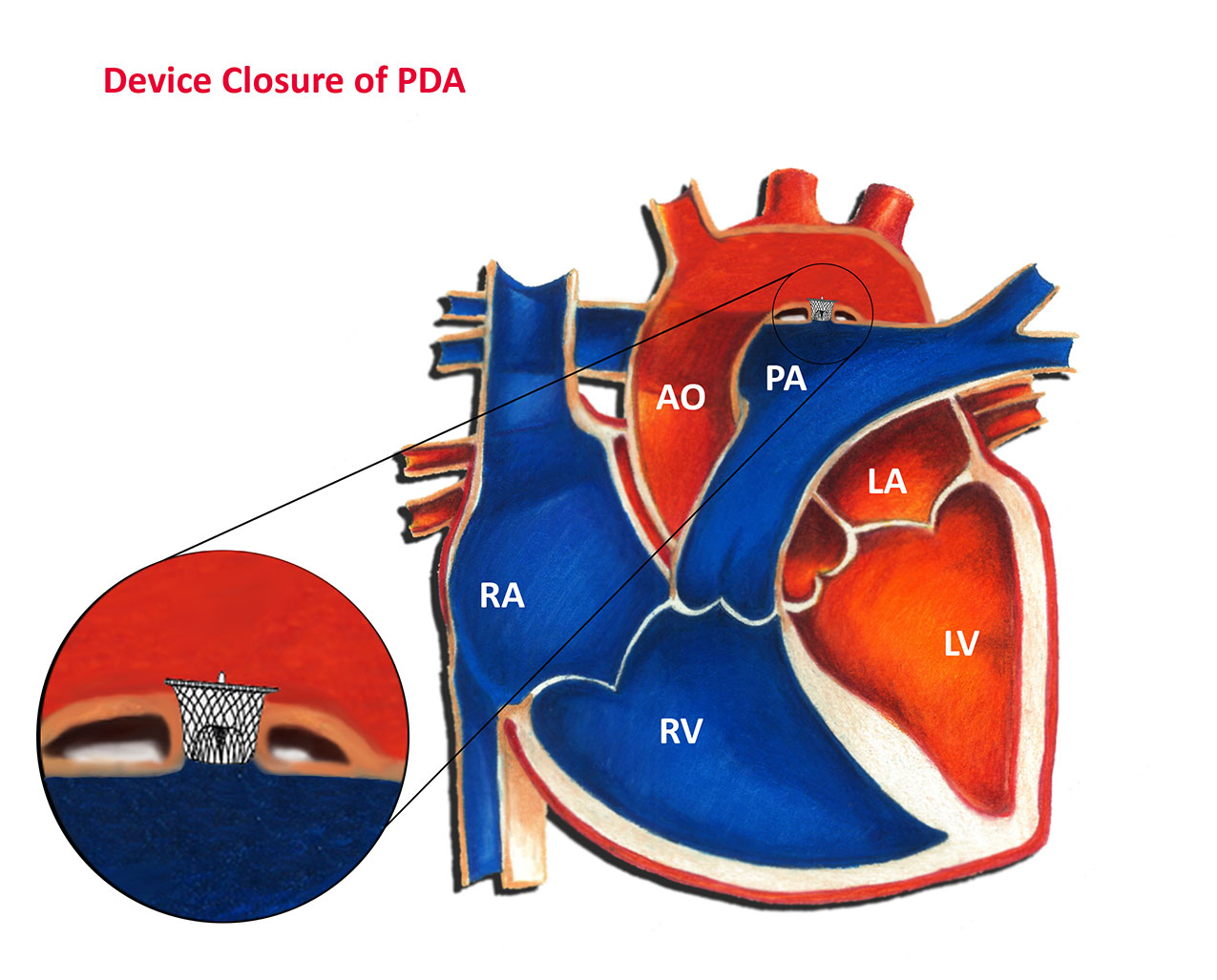Patent Ductus Arteriosus - Device Closure


A patent ductus arteriosus (PDA) is an abnormal communication between the aorta and pulmonary artery that allows for oxygenated (red) blood to pass into the lungs. If the amount of blood flowing through the PDA is enough to cause problems, then intervention may be indicated. This most commonly occurs in the setting of a large or moderate size PDA. Indications for intervention in infancy include symptoms unresponsive to medication, elevated blood pressure in the lungs, and significant dilation of the heart due to excess blood flow. Usually the need for intervention in infancy becomes clear by 6-12 months of age, and often much earlier
In premature and small babies typically surgery is used to close a PDA. The surgery is performed through a thoracotomy. The chest is entered from the upper left side of the back. The surgeon separates the ribs and moves the lung out of the way, allowing for visualization of the PDA. The surgeon then typically either clips or ligates the PDA. Usually this is a fairly straightforward surgery. The vast majority of babies who undergo surgery recover quickly with no significant complications.
The most common form of intervention for older infants and children is “device closure” in the cardiac catheterization laboratory, as shown in the diagram above. A catheter (a long thin tube) is placed into the heart through a blood vessel in the leg. A device is then positioned in the PDA, effectively closing it from the inside. Usually scar tissue starts to form around the device very quickly, often within hours, to seal it into place permanently. Once the device is adequately positioned, there is little to no risk of it coming free. The vast majority of patients who undergo device closure of a PDA spend one night in the hospital and are discharged home the following day. They are usually back to full activity within the week.
The long-term prognosis for a patient undergoing PDA closure either by surgery or device closure is outstanding. The vast majority of patients have no significant problems whatsoever long-term.
All patients who undergo either surgery or device closure of a PDA are required to take antibiotics before any dental or surgical procedures for at least 6 months following the procedure. This precaution is designed to minimize the risk of any bacterial infection forming in the heart tissue. This can happen with dental work and certain forms of surgery. After 6 months, usually the normal heart tissue has sealed things in place sufficiently to no longer require this.
